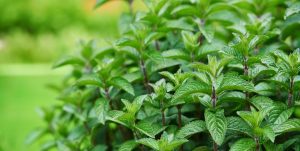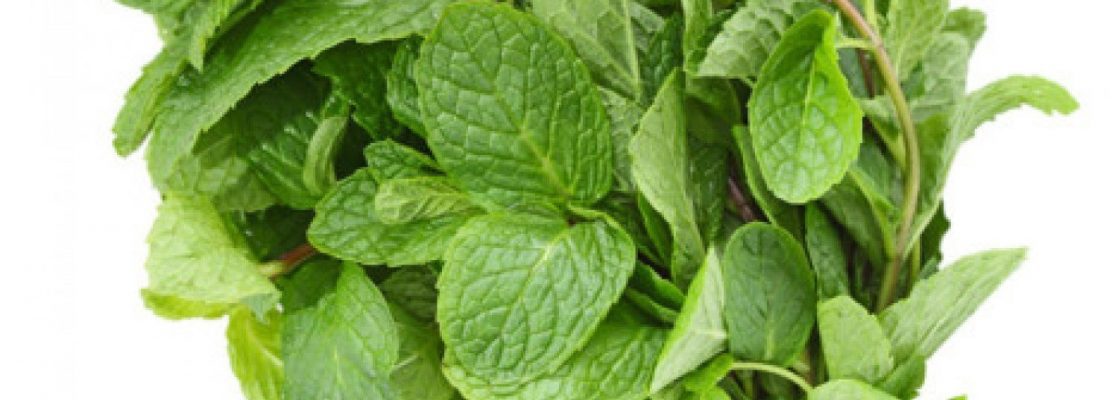Apple mint (mentha suaveolens)
Natural health benefits of apple mint
Apple mint (mentha suaveolens) is a perennial herb plant that grows tall and is sometimes called the woolly mint. This herb grows taut to a height of 40 to 100 centimetres and spreads as broad foliage.
In early times, the Greeks used apple mint to clean their banqueting tables and also added it to their baths to rejuvenate their bodies.
 Apple mint can be used in preparing jams jellies tea sources and desserts. The dried form of apple mint leaves can be used to prepare delicious potpourri the mint leaves contains nutrients like iron, potassium, calcium, vitamin A, B, and C which replenish our body.
Apple mint can be used in preparing jams jellies tea sources and desserts. The dried form of apple mint leaves can be used to prepare delicious potpourri the mint leaves contains nutrients like iron, potassium, calcium, vitamin A, B, and C which replenish our body.
The flowers can be used to make tea which if consumed promotes digestion cures many ailments such as intestine problems and stomach pain and refreshes the mind
The Mint tea is an excellent choice when a headache strikes or when stomach discomfort begins to spoil your day mints of all types also address feverish conditions effectively
Researchers using the essential oil of apple mint show promise for treating vaginal candidiasis mint contains a number of vitamins and minerals which are vital to maintaining a healthy body.
Mint is rich in vitamins A, B, and C and also contains a small amount of vitamin B12 Vitamin C is an important antioxidant and may help to decrease the risk of certain cancers such as colon and rectal cancer
Mint has always been used medicinally to aid digestion and relieve indigestion pregnant women should not consume apple mint since it can cause abortion.
Apple mint is highly toxic when taken in large in doses apple mint consumption in excess can lead to muscle aches, Gramps, tremors, drowsiness, diarrhoea and a slow heart rate.
Now that you know the health benefits of apple mint, add to your knowledge from this video about the apple mint family.
Here are some detailed uses of this plant customized for your use:
1. Use as herbal tea
Apple mint is most widely used as a medicinal tea. The leaves of apple mint are dried and powdered. It is then brewed as tea which can cure fever, headache, various digestive problems and various other minor ailments.
2. Antiseptic in nature
The leaves of the herb can be crushed and oil can be extracted from them. This oil is antiseptic in nature and is used widely for many medical purposes.
3. Cures Digestion problems
Flowers of the Apple mint can be used to make tea which will cure problems related to the digestive system such as stomach upset, indigestion and worms in the intestine. This tea is also very refreshing in nature and has the power to heal headaches.
4. Reduces the chances of cancer
Apple mint is rich in vitamins A and C and is also said to contain a minimal amount of Vitamin B2. These act as antioxidants which help in preventing cancer cell formation in the colon and rectal.
5. Other Health benefits
The crushed leaves of this plant are said to eliminate the pain caused by bee stings, wasp stings and other insect bites. They bring about a cooling effect on the affected part of the body.
Traditional uses and benefits of Apple Mint
- Round-leafed mint, like many other members of this genus, is often used as a domestic herbal remedy, being valued particularly for its antiseptic properties and its beneficial effect on digestion.
- Tea made from the leaves of most mint species has traditionally been used in the treatment of fevers, headaches, digestive disorders and various minor ailments.
- Essential oil in the leaves is antiseptic, though it is toxic in large doses.
- Monks had used it for curing epileptic fits since it was considered refreshing for the brain.
- Apple mint leaves also help in breaking down fat and accelerating metabolism levels.
- Leaves have anti-cancer properties.
- Powdered leaves can be used to whiten the teeth.
- Essential oil extracted from the leaves is used in aromatherapy to cure acne, colic, cramps, colds, flu, stress, shock, asthma and travel sickness.
- The plant has antiseptic properties, improves digestion, and reduces fever, headaches, digestive disorders and other minor ailments.
- Oil extracted from the leaves is used in aromatherapy to heal acne, cramps, colds, flu, stress, shock, asthma and travel sickness.
- Monks believed that you could use the herb to treat the fatigue that followed epileptic seizures.
- Flowers can be used to make tea which if consumed promotes digestion, cures many ailments such as intestine problems, and stomach pain and refreshes the mind.
- Researchers using the essential oil of apple mint show promise for treating vaginal candidiasis.
- Tea also aids in alleviating stomach aches, various ailments, such as intestinal disorders, and an assortment of other health conditions.
- This herbal tea also aids in breaking down ingested fats and augmenting the level of metabolism.
Steps for Storing Apple Mint
Follow the following steps to store apple mint.
- Rinse the leaves in cool water and dry them.
- Gather the mint branches into a small and loose bunch.
- Put the leaves in a paper sack that has holes to allow circulation.
- The leaves should be kept upside down with the base of the stems at the top.
- Tie the base of the stems and close the sack.
- Place the bag in a dry ventilated area so that the leaves get crispy.
- Shake the bag later to loosen the leaves from the stem and pour them in an airtight vessel.
- Keep the airtight vessel in a cool, dark and dry room.
Steps for Growing Apple Mint
If you wish to cultivate apple mint in your farm or backyard, these basic rules will come in handy for that.
- Apple mint should be grown in a rich, moist and well-drained soil.
- Always plant the herb in full sun to partial shade.
- Protect the yard by creating a deep barrier in the soil so that the roots do not spread far.
- 1 to ½ of space must be kept between the plants.
- Too much fertilizers or fresh manure will encourage rust which is harmful for the plant.
- Frequent cutting or mowing will keep the mints trimmed and accelerate the growth.
Apple mint should be harvested just before the blooming season. The leaves should be picked at midday when the concentrations of essential oils are high. You can pick individual leaves or cut the stems for a large harvest. Remove the flower buds when they develop in late summer. These buds make the flavour bitter.
Culinary uses
- Leaves can be consumed raw or cooked as a potherb.
- It is used as a flavouring in salads or cooked foods.
- Leaves have a similar flavour to spearmint, and are considered to be superior in flavour to that species but are also hairy, which makes them less suitable for garnishing.
- Herbal tea is made from the leaves.
- Leaves of this plant can be used to make apple mint jelly.
- It is used as a flavouring in dishes such as apple mint couscous.
- Apple Mint can be used in preparing jams, jellies, tea, sauces and desserts.
- The dried form of apple mint leaves can be used to prepare delicious potpourri.
- Leaves can also be used in making fruit salads.
- They can be added to cottage cheese and cream cheese.
- They are a tacky addition to Mediterranean cuisines, vinaigrettes and sauces.
- They are also used in making candies and mint chocolates.
- Certain alcoholic drinks carry a pinch of Apple mint.
Recipes
Apple Mint and Pink Grapefruit Fool
Ingredients
- 1 lb. tart apples, peeled and sliced
- 8 oz. pink grapefruit segments
- 3 tbsp. clear honey
- 2 tbsp. water
- 6 large sprigs of apple mint, plus more to garnish
- 2/3 cup double cream
- 1 ¼ cups custard
Directions
- Place the apples, grapefruit, honey, water and apple mint in a pan, cover and simmer for 10 minutes until soft.
- Leave in the pan to cool, and then discard the apple mint.
- Purée the mixture in a food processor.
- Whip the double cream until it forms soft peaks, and fold into the custard, keeping 2 Tbsp. to decorate.
- Carefully fold the cream into the apple and grapefruit mixture.
- Serve in individual glasses, chilled and decorated with swirls of cream and small sprigs of apple mint.
Apple mint Angel Food Cake
Ingredients
- 1 cup pastry flour
- 2 tbsp. cornstarch
- 5 large egg whites
- 2/3 cup sugar-grated rind of half a lime
- 1 tbsp. finely chopped apple mint
Directions
- Preheat oven to 350 F.
- Line the base of an angel food pan with nonstick baking paper, but do not grease the pan.
- Sift the flour and cornstarch with 1 tbsp. of the sugar.
- Whisk the egg whites until stiff, then add the rest of the sugar gradually, whisking until the mixture is very thick.
- Fold in the flour, grated rind, and mint.
- Turn into the pan and bake for 35-40 minutes.
- Invert the cake, in the pan, onto a wire rack to cool, but do not unmold until cold.
- Serve sprinkled with confectioner’s sugar.
- The cake should be eaten soon after baking, as it does not keep well.
Apple Mint Pudding
Ingredients
- 2 cups milk
- ¾ cup sugar
- 2 tbsp. cornstarch
- ¼ tsp. salt
- 2 egg yolks, beaten
- 2 tbsp. butter
- 1 tsp. pure vanilla extract
- 1 tsp. apple mint, finely minced
- sprigs of fresh mint, for garnish
Directions
- Combine the milk, sugar, cornstarch, and salt in a medium saucepan.
- Stir to blend well.
- Cook the mixture over medium-low heat, stirring all the time, until it is thick.
- Remove from the heat and cool slightly.
- Spoon a small amount of the hot pudding mixture into the beaten egg yolks and stir.
- Pour the egg mixture into the pudding mixture, and cook for 2 minutes.
- Remove from the heat.
- Add the butter, vanilla and mint; stir.
- Pour into individual dessert dishes.
- Cool, and serve with a sprig of mint.
Strawberry-Apple Mint Pie
Ingredients
- 1 9-inch baked pie shell
- 1 cup strawberries, crushed
- 2 medium apples, chopped
- 2 tbsp. finely chopped apple mint
- 1 cup water
- 1 cup sugar
- red coloring
- additional whole berries
Direction
- Wash and hull berries; crush enough to make 1 cup.
- Reserve 6 or 8 berries of equal size for garnish and small ones to cover the pie bottom.
- Pare and chop apples.
- In water in a saucepan dissolve sugar and add fruits and mint.
- Bring to a boil then cook over low heat for 5 minutes.
- Test for thickening, and when juice drops thickly off a spoon, remove from heat, stir in colouring and cool for a few minutes.
- Arrange a layer of reserved berries over the bottom of a pie shell and pour a warm mixture over them.
- As the pie begins to set, place a berry on top for each serving, equidistant from each other and about halfway out from the centre.
- Whipped cream may be piped around berries or decorate the top as desired.
Apple Ale
Ingredients
- ½ cup sugar
- 1 cup water
- 18 sprigs of apple mint
- 4 lemons
- 1 quart ginger ale
Directions
- Boil sugar and water until sugar is dissolved.
- Remove from heat and add 10 sprigs of apple mint. Chill.
- Add the juice of 4 lemons and strain.
- After filling mint julep glasses with crushed ice, add ½ cup apple ale and fill to top with ginger ale.
- Add a sprig of apple mint and serve.
Other facts
- An essential oil is obtained from the whole plant.
- Rats and mice intensely dislike the smell of mint.
- The plant was therefore used in homes as a strewing herb and has also been spread in granaries to keep the rodents off the grain.
- In early times, the Greeks used apple mint to clean their banqueting tables and also added it to their baths to rejuvenate their bodies.
- This flower was used as a floral spectacle and was in full bloom at the Olympic Games 2012.
- The Apple Mint oil is also used for producing Breath fresheners, toothpaste, chewing gums, candies and mint chocolates.
- The oil is mixed with camper and used to produce mosquito repels.
- Mint oil is also used as an environmentally friendly insecticide for its ability to kill some common pests like wasps, hornets, ants and cockroaches.
- The herb was strewn across floors to cover the smell of the hard-packed soil.
Precautions
- Large quantities of some members of this genus, especially when taken in the form of the extracted essential oil, can cause abortions so some caution is advised.
- Consuming apple mint might be harmful for those who are allergic to menthol or have asthma.
- Apple mint consumption in excess can lead to several stomach disturbances, muscle aches, cramps, tremors, drowsiness, diarrhoea and slow heart rate.
- Pregnant women should not consume apple mint since it can cause abortion.
- Apple mint is highly toxic when taken in large doses.
R

